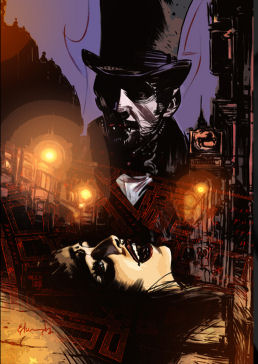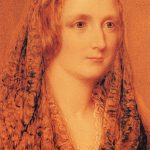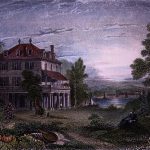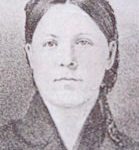The attention given to vampirism coincided (and maybe contributed to) a rising interest in gothic literature, first in Germany and later (during the last decades of the eighteenth century) in England. The vampire, a revenant from the realm of folklore, became soon adopted by gothic writers. Johann von Goethe wrote his novel The Bride of Corinth (Die Braut von Corinth), preceded by Gottfried August Buerger’s Lenore.
These stories, as well as several poems of vampires of the 19th century by Robert Southey, Keats, Coleridge and Baudelaire, included an element previously unkown to the vampire lore in traditional sense. This was the element of seduction, the bringing of pleasure in death. The most important contribution came from Lord Byron’s personal physician, John Polidori. He was to write the first piece of vampire fiction in the English .
 Polidori’s story can be traced to a famous literary gathering on the shores of Lake Geneva in the summer of 1816. He and his employer, Lord Byron, were residing at the Villa Diodati where they were visited by Percy Shelley, Mary Godwin (who would soon become Mary Shelley) and Mary’s step-sister. One evening, after a collective reading of ghost stories, Byron suggested that each member of the party write a story of their own.
Polidori’s story can be traced to a famous literary gathering on the shores of Lake Geneva in the summer of 1816. He and his employer, Lord Byron, were residing at the Villa Diodati where they were visited by Percy Shelley, Mary Godwin (who would soon become Mary Shelley) and Mary’s step-sister. One evening, after a collective reading of ghost stories, Byron suggested that each member of the party write a story of their own.
Two tales that started Gothic fiction as a genre were inspired by this challenge. Mary Godwin worked on a tale that would later evolve into Frankenstein, Byron wrote (and quickly abandoned) a fragment of a story, whereas Polidori is remembered as having come up with a story about a skull-headed woman.
Dr. Polidori was inspired by real-life vampire cases that had occurred only a century before in Europe. However, rather than use the crude, bestial vampire of folklore as a character template, Polidori based his antagonist on his former friend, Lord Byron. Although the mysterious character in Byron’s piece was named Darvell, Polidori renamed the character "Lord Ruthven" as a snide in-joke. Mary Shelley began Frankenstein, while Byron wrote a fragment which lay unfinished and discarded until picked up and reworked by Polidori who used Byron’s abandoned story as inspiration for his own tale and published it in 1819 as The Vampyre.
This story was an immediate and phenomenal success, due in no small part to the fact that most people believed it had been written by his employer; even Goethe considered it Byron’s best work. It triggered a rash of vampire plays on the stages of London and Paris, and later inspired a German opera, Der Vampir.
Interest in vampire literature continued through the nineteenth century with the appearance of several short stories and novels. Some are still worth reading and remain classic of gothic literature. Carmilla (1871) by Sheridan Le Fanu, a lesbian vampire who preys on a lonely young woman, and Varney the Vampire by James Malcolm Rymer, an aristocratic vampire who preys upon the Bannerworths, a formerly wealthy family driven to ruin by their recently deceased father.
But it was Dracula, published in 1897, that became the model by which all future vampires (in literature and film) would be measured. Bram Stoker combined several of the elements of early vampire fiction with the results of research into vampire folklore – and added a few of his own, to build the archetype of the new vampire.








